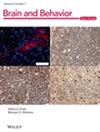The Combination of Two Small Molecules Improves Neurological Parameters and Extends the Lifespan of C3H Strain Female Mice
Abstract
Objectives
Targeting partial cellular reprogramming pathways through specific small molecule combinations holds promise for lifespan extension in model organisms. Chemical cocktails like RepSox and tranylcypromine (TCP) may induce beneficial age-related changes without the risks of full reprogramming. This study investigated the effects of RepSox and TCP on neurological markers, physical activity, skeletal health, and survival in aging C3H female mice.
Methods
Female C3H mice were divided into two age groups: “old” (16–20 months) and “senior” (10–13 months). They received intraperitoneal injections of RepSox (5 mg/kg) and TCP (3 mg/kg) or DMSO (control) every 72 h for 30 days. Physiological state, neurological scores, open field test performance, skeletal deformation, and survival were assessed. Histological analyses of organs (brain, liver, heart, kidneys, lungs, muscles) were performed post-treatment. Statistical analyses included Mann-Whitney tests, mixed-effects linear regression, Kaplan-Meier survival analysis, and the Gao-Allison test.
Findings
In the “old” group, treated mice showed enhanced neurological status, fur and skeletal health, and increased cortical angiogenesis, though with some adverse histological changes in the liver and brain. In the “senior” group, treated mice displayed a plateau in mortality after month seven, while deaths continued in controls. Although overall survival was not significantly different, maximum lifespan significantly increased in treated mice (p = 0.039, Gao-Allison test). Histological findings revealed localized adaptive changes rather than major toxic effects. These results suggest that the combination of RepSox and TCP exerts protective effects on aging phenotypes and may potentially slow systemic aging processes in C3H mice.


 求助内容:
求助内容: 应助结果提醒方式:
应助结果提醒方式:


